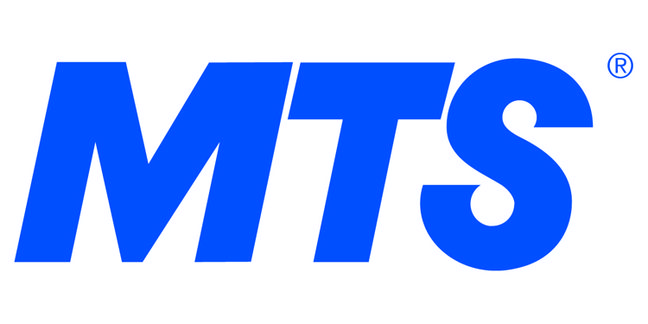Jason Verge| Datacenterknowledge
Within that mega-trend are many smaller trends, which have important implications for the industry and your IT operations. Here’s a look ahead at the trends that cloud thought leaders believe will be the most significant in 2014.
Cloud and CDN continue to blur, and the Network plays a bigger role.
As perhaps the last bastion to get “cloudified”, the network will continue to be a focal point in 2014. There’s also been a lot of interest in “edge” computing, and using cloud in a way to deliver content more efficiently.
“The world of cloud and CDN is going to continue to blur,” said Robert Miggins, senior VP of business development at Peer 1. “Clouds that run in multiple geographies will be important. In order to be bold, in order to be a real player in the cloud you have to be in multiple locations. Those locations need to be able to operate between very seamlessly. You get at some distributed content ala CDN. We’re seeing customers come to us because we have lots of data center choice and they’re connected to one another.”
“Let’s get that data closer to the edge,” said Tyler Hannan, Director of Marketing, Basho. “The ability to insure continuous experience regardless of where the user is located will be critical.”
“Cloud computing will become even more fundamental to business strategy, and IT leaders will need to rethink the role of the network to deliver on the promise of cloud,” predicts Juniper Networks. “Enterprise data centers typically operate in silos and the lack of integration between compute, storage and networking has prevented businesses from achieving the goals of agility and operational efficiency. As enterprises begin to realize the benefits of cloud to achieve these goals, and the deployment and orchestration systems like OpenStack and CloudStack mature, managing data centers will be about managing workflows. As a result, there will be full integration of the network into the cloud workflow, making it more operationally efficient and easier to quickly meet changing demands.”
Open Source: From Alternative to Prime Time
“Open source is something that’s been out there for a long time, said Rackspace CTO John Engates. “A lot of times it was the alternative. The CIO would choose enterprise technology, but there was always a sort of rebellious developer thing. Open Source has flipped to where it’s leading the way. Rackspace never believed we’d be able to run our entire technology on open source.
“You won’t be looking to a specific vendor for your roadmap,” Engates cointinued. “This won’t happen over night for enterprises. I think it’s DevOps that really drives this change. The developer didn’t have as much clout in the old days. They are now the much larger influencers of the technology decision. Sometimes it’s just the developer doing his thing with open source software – without an RFP. The developer prototypes the whole thing.
“The scale of things has driven people to open source. License fees for many, many users doesn’t make sense. Nobody wants to pay a license fee every time you spin up a cloud server. With web, mobile and social, people will make proprietary the fall back. The emergence of software as a service adds to this – you’re renting, reducing your dependence on some of the historic software vendors. In the old days, nobody could imagine not having Microsoft, Oracle, SAP, but every company is starting to see the opportunity. It’s losing its stranglehold on IT. A lot of SaaS companies see that as the way to build their infrastructure.”
From Public or Private, to Public AND Private
Both public and private cloud models will take root; they are complementary, not competitive. “We also see the private-or-public cloud debate of yesteryear shifting to the private-AND-public cloud debate where enterprises are benefiting from the security and reliability of the private cloud while harnessing the scalability and flexibility power of the public cloud,” said Equinix. “In fact, Gartner recently advised enterprises to design private cloud services with a hybrid future in mind and make sure future integration and interoperability are possible. We couldn’t agree more.”
“We feel so confident about the demand for hybrid computing, and specifically within the world of hybrid, calling it a prediction is taking it the easy way out,” said Peer 1′s Miggins. “We have heard demand for hybrid computing and the requests have intensified over the last 12 months.”
Cloud Containers
Container technology is an easy way to spin applications up and down in a more efficient way. Rackspace recently acquired a company called ZeroVM, which has Container technology. Docker is another player.
Rackspace CTO John Engates said if he cut put his hat on one prediction, it’d be this one: Containers will take off and be used heavily in production. “We’re getting a lot of interest. Every customer is talking about it, playing with it,” said Engates.
Containers simplify the deployment and management of cloud applications. The next big thing is containerizing and virtualizing the application, not just the machine. It makes things smaller, lighter and faster. It isolates each individual user in a separate container, and it makes the development experience better
Cloud: The Birthplace of Value-Added Services
“Expect more MSPs and VARs to add cloud Backup-as-a-Service and DR-as-a-Service to their lineup of offerings as a way to bring more value to their customers,” said Janae Stow Lee, senior vice president, Filesystem and Archive at Quantum. “Major storage companies will play a key supporting role in providing the underlying technologies as part of a broader effort to compete with cloud leaders such as Amazon.”













